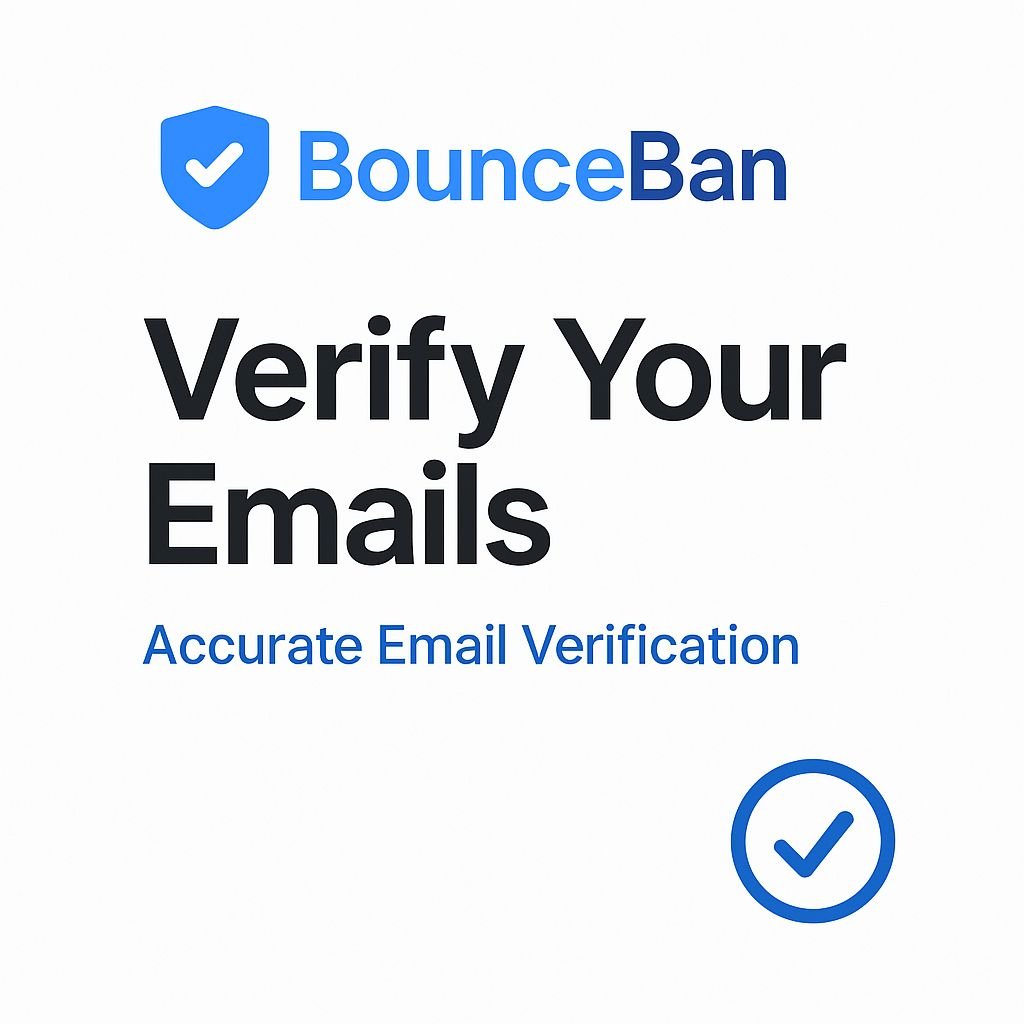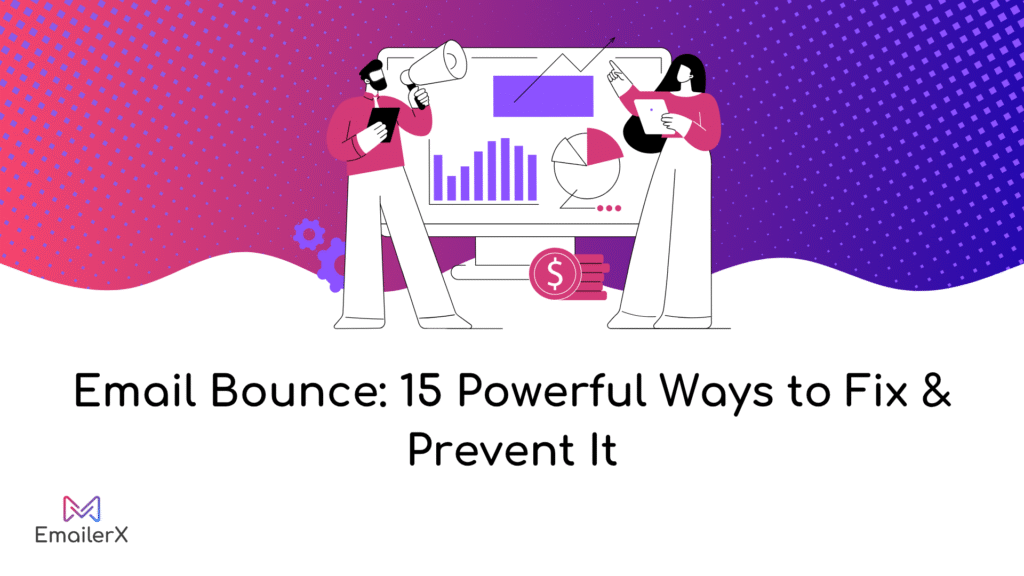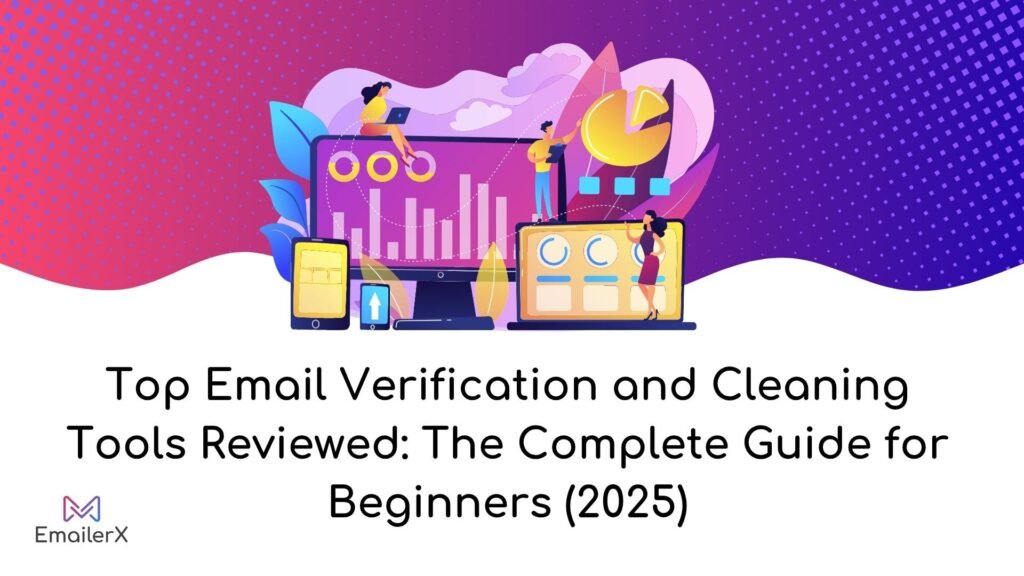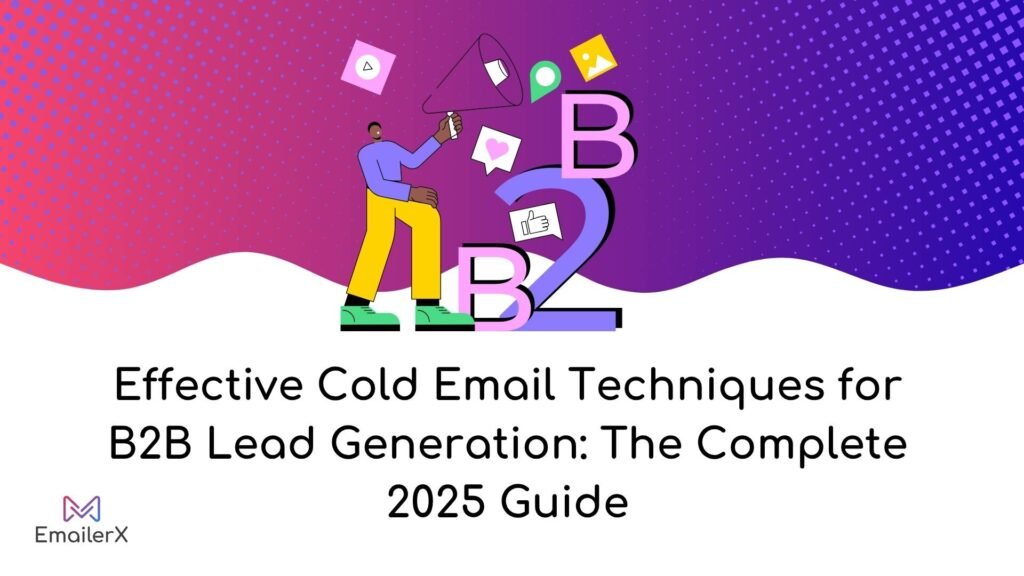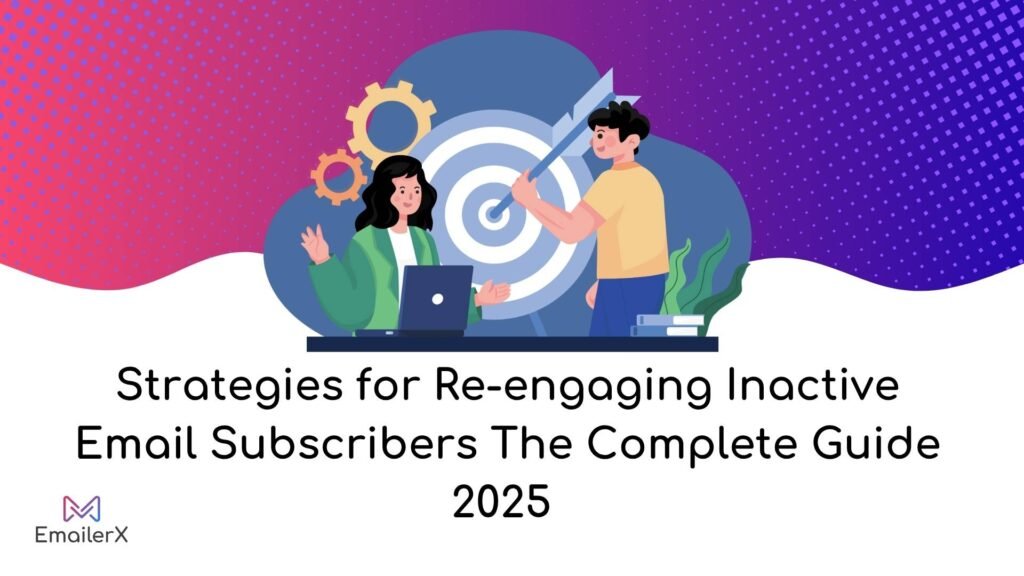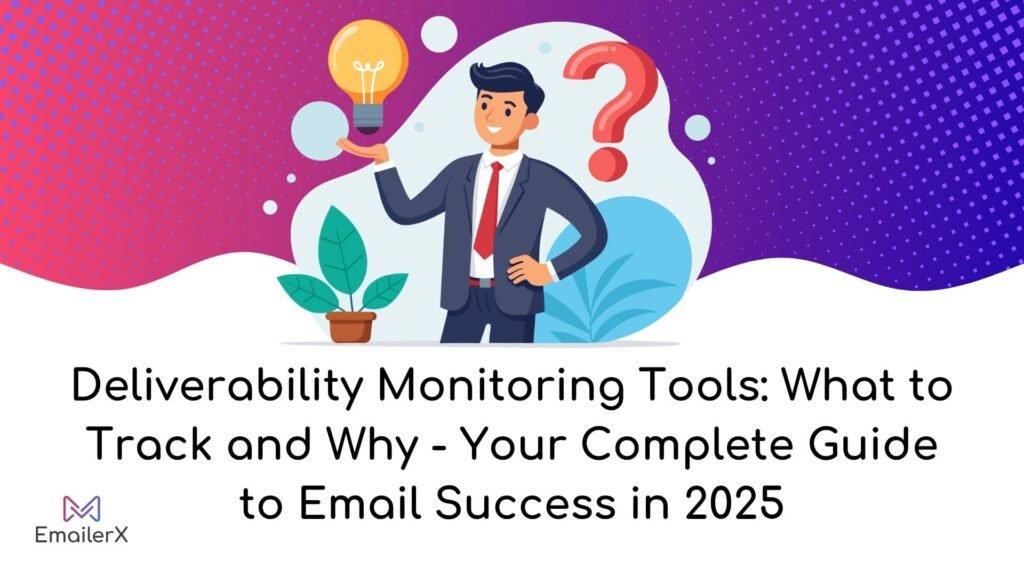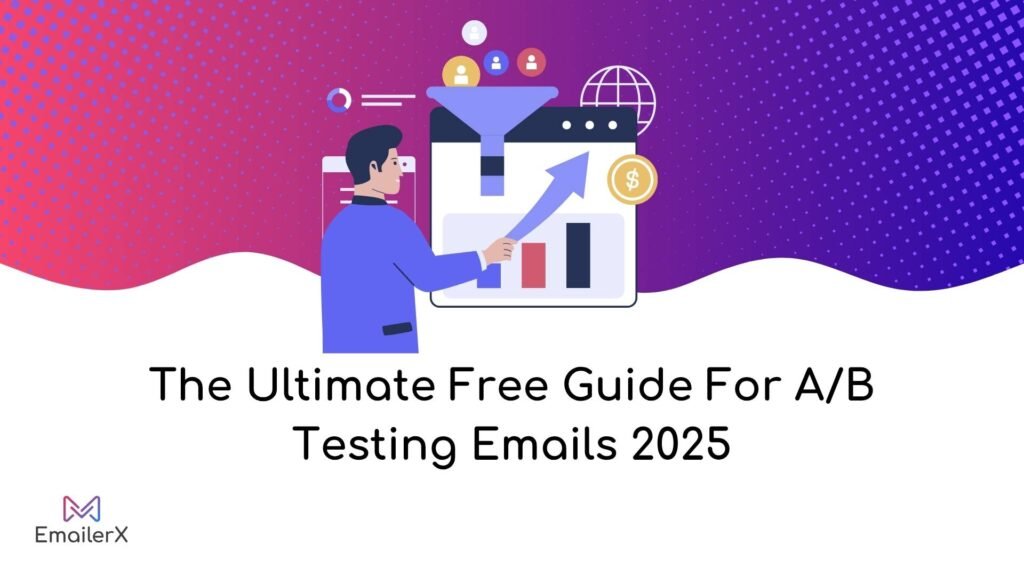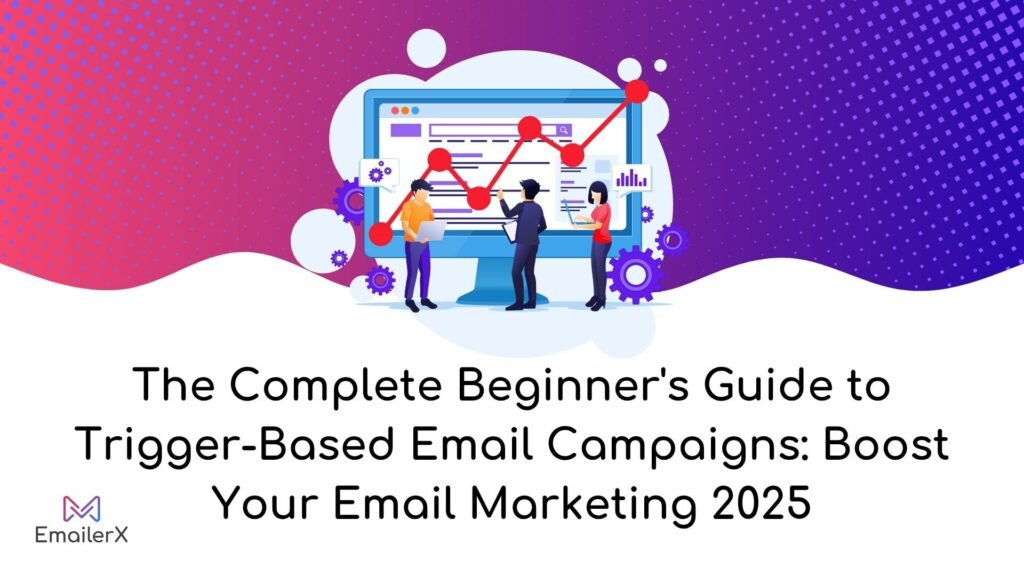Table of Contents
ToggleIntroduction
Email remains one of the most powerful communication tools in both personal and business contexts. Behind every email you send is a complex system working tirelessly to ensure your message reaches its destination.
This comprehensive guide breaks down everything you need to know about email infrastructure from basic components to advanced configurations.
Whether you’re setting up an email system for your business, troubleshooting delivery issues, or simply curious about how your messages travel across the internet, this guide provides the essential knowledge you need to navigate the world of email infrastructure in 2025.
What you’ll learn:
- Core components of modern email infrastructure
- Build vs. buy decision frameworks with cost analysis
- Advanced security practices for reliable delivery
- Integration strategies with your existing systems
- Future-proofing your email setup for years to come
Let’s begin our journey into the fascinating world of email infrastructure!
What is Email Infrastructure?
Email infrastructure refers to the complete ecosystem of hardware, software, services, and protocols that work together to enable the sending, receiving, processing, and storage of email messages. It’s the backbone that supports all email communications, ensuring messages are delivered securely, efficiently, and reliably.
The Evolution of Email Infrastructure
Email has come a long way since its inception in the early 1970s:
- 1970s-1980s: Simple text-based messages between computers on the same network
- 1990s: Introduction of SMTP, POP3, and IMAP protocols standardizing email communication
- 2000s: Rise of webmail services and increased focus on spam prevention
- 2010s: Cloud-based email infrastructure and advanced security measures
- 2020s: AI-integrated systems with sophisticated delivery optimization and threat detection
Today’s email infrastructure must handle billions of messages daily while combating increasingly sophisticated security threats and meeting strict compliance requirements.
Core Components of Email Infrastructure
Modern email infrastructure consists of several key components working in harmony:
1. Mail Transfer Agents (MTAs)
The MTA is the cornerstone of any email infrastructure, responsible for routing and delivering email messages using the SMTP protocol. Think of MTAs as the postal service of the email world.
Popular MTA solutions include:
- Postfix (open-source)
- PowerMTA (commercial)
- MailerQ (commercial)
- SendGrid SMTP (cloud service)
Key MTA considerations:
- Processing capacity (messages per hour)
- Delivery optimization capabilities
- Queue management features
- Monitoring and reporting tools
2. Mail Delivery Agents (MDAs)
MDAs receive messages from MTAs and deliver them to individual mailboxes. They’re responsible for the final delivery of messages to recipients.
Common MDA examples:
- Dovecot
- Courier
- Cyrus IMAP
3. Mail User Agents (MUAs)
MUAs are the email clients that users interact with to read, compose, and manage emails.
Popular MUAs include:
- Gmail
- Microsoft Outlook
- Apple Mail
- Thunderbird
4. DNS Configuration
Proper DNS configuration is crucial for email delivery and security. Key DNS records for email include:
SPF (Sender Policy Framework)
SPF records specify which mail servers are authorized to send email on behalf of your domain. This helps prevent email spoofing and improves deliverability.
Example SPF record:
v=spf1 include:_spf.google.com include:sendgrid.net ~all
DKIM (DomainKeys Identified Mail)
DKIM adds a digital signature to outgoing messages, allowing receiving servers to verify that the message hasn’t been tampered with during transit.
DMARC (Domain-based Message Authentication, Reporting & Conformance)
DMARC builds upon SPF and DKIM, providing instructions on how to handle messages that fail authentication checks and enabling reporting.
Example DMARC record:
v=DMARC1; p=reject; rua=mailto:dmarc-reports@yourdomain.com; pct=100
BIMI (Brand Indicators for Message Identification)
A newer standard that allows verified senders to display their logo alongside emails in supporting inbox providers. If you’re looking for a step-by-step walkthrough of how to set up these essential records, don’t miss our Complete 2025 Free Guide to Implementing SPF, DKIM, and DMARC for Email Authentication. It covers setup tips, example configurations, and best practices to protect your domain and boost deliverability.
5. IP Infrastructure
IP addresses play a crucial role in email infrastructure and reputation management:
- Dedicated IPs: Exclusive to your organization, giving you complete control over sender reputation
- Shared IPs: Used by multiple senders, typically in cloud email services
- IP Warming: The process of gradually increasing sending volume from a new IP to establish reputation
If you’re planning to establish your own sending environment, don’t miss our Step-by-Step Guide for Setting Up a Dedicated Email Server in 2025. It walks you through configuration, authentication setup, IP warming, and infrastructure optimization for high deliverability.
6. Email Authentication Systems
Beyond the DNS records mentioned above, comprehensive email infrastructure includes:
- TLS (Transport Layer Security) for encrypted message transit
- S/MIME or PGP for end-to-end message encryption
- ARC (Authenticated Received Chain) for maintaining authentication through forwarding
Build vs. Buy Decision Framework
One of the most critical decisions when establishing email infrastructure is whether to build your own system or leverage third-party services.
Cost Analysis Considerations
Self-Hosted Infrastructure Costs
Initial Setup:
- Hardware costs (servers, storage, networking)
- Software licensing (if using commercial solutions)
- Implementation labor (engineering time)
- Testing environment setup
Ongoing Costs:
- Maintenance and updates
- Monitoring and operations staff
- Security management
- Compliance auditing
- Scaling expenses as volume grows
Third-Party Service Costs
Initial Setup:
- Integration development
- Configuration and testing
- API implementation
Ongoing Costs:
- Per-message or volume-based pricing
- Support contracts
- Additional feature costs
TCO Comparison by Sending Volume
| Volume (monthly) | Self-Hosted TCO | Cloud Service TCO | Recommended Approach |
| <10,000 | High | Low | Cloud service |
| 10K-100K | Medium-High | Low-Medium | Cloud service |
| 100K-1M | Medium | Medium | Hybrid approach |
| 1M-10M | Medium-Low | Medium-High | Evaluate case by case |
| >10M | Low | High | Self-hosted with cloud backup |
Organizational Capability Assessment
Consider these factors when making your build vs. buy decision:
- Technical expertise available in-house
- Infrastructure management experience
- Compliance requirements specific to your industry
- Growth projections for email volume
- Time-to-market requirements
- Integration needs with existing systems
Advanced Email Infrastructure Engineering
Microservices Architecture for Email Systems
Modern email infrastructure often employs a microservices approach, breaking down functionality into independent services:
- Authentication service
- Template rendering service
- Delivery optimization service
- Analytics service
- Feedback processing service
This architecture provides several advantages:
- Improved scalability for specific components
- Enhanced reliability through service isolation
- Easier maintenance and updates
- Better resource allocation
Queue Management Optimization
Efficient queue management is essential for high-volume email systems:
Key queue considerations:
- Priority-based processing
- Rate limiting by domain and IP
- Retry strategy optimization
- Backpressure handling
- Dead letter queues for failed messages
Popular queue technologies:
- RabbitMQ
- Apache Kafka
- Redis Streams
- Amazon SQS
Real-time Monitoring and Observability
Comprehensive monitoring is crucial for maintaining reliable email infrastructure:
Essential metrics to track:
- Delivery rates (overall and by domain)
- Bounce rates by type (hard vs. soft)
- Open and click rates
- Spam complaints
- Authentication pass/fail rates
- Queue health metrics
- Server resource utilization
Observability tools for email infrastructure:
- Prometheus + Grafana
- ELK Stack
- Datadog
- New Relic
Scalability Engineering for Email Infrastructure
Horizontal vs. Vertical Scaling Strategies
Vertical Scaling (scaling up):
- Adding more resources (CPU, RAM) to existing servers
- Simpler to implement but has physical limitations
- Best for moderate growth scenarios
Horizontal Scaling (scaling out):
- Adding more server instances
- More complex but virtually unlimited scaling potential
- Required for high-volume email operations
Database Design for Email Operations
Email systems generate enormous amounts of data that must be efficiently stored and accessed:
Common database strategies:
- Sharding by sender or recipient domain
- Time-series data for analytics
- NoSQL solutions for event data
- Relational databases for user and configuration data
Data retention considerations:
- Regulatory requirements
- Storage costs
- Performance impact
- Analytics needs
Global Infrastructure Distribution
For organizations operating internationally:
- Regional MTAs to improve delivery speeds
- Content distribution networks for template assets
- Data sovereignty considerations for storage
- Failover systems across regions
Security and Compliance in Email Infrastructure
Advanced Email Security Framework
Threat protection layers:
- SPF, DKIM, DMARC configuration
- Anti-spam filtering
- Malware scanning
- URL defense
- Attachment sandboxing
- AI-powered anomaly detection
Regulatory Compliance by Region
Email infrastructure must adhere to various regulations depending on your operating regions:
Global considerations:
- GDPR (European Union)
- CAN-SPAM Act (United States)
- CASL (Canada)
- CCPA/CPRA (California)
- LGPD (Brazil)
- POPIA (South Africa)
Key compliance requirements:
- Consent management
- Unsubscribe functionality
- Data storage limitations
- Data subject access rights
- Breach notification processes
Data Protection Beyond Encryption
Comprehensive data protection includes:
- End-to-end encryption options
- Access control systems
- Data loss prevention (DLP) tools
- Audit logging
- Secure development practices
Deliverability Engineering
Infrastructure Impact on Deliverability
Your email infrastructure directly affects whether your messages reach the inbox:
Technical factors affecting deliverability:
- IP reputation
- Domain reputation
- Authentication implementation
- List hygiene processes
- Feedback loop handling
- Content filtering considerations
ISP-specific Infrastructure Considerations
Major inbox providers have unique requirements:
Gmail:
- Strong authentication requirements
- Engagement-based filtering
- Strict content rules
Microsoft/Outlook:
- Reputation scoring systems
- Smart Network Data Services (SNDS)
- Specific throttling patterns
Yahoo:
- Feedback loop participation
- Volume consistency requirements
- Domain reputation focus
AI in Deliverability Optimization
Modern email infrastructure leverages AI for:
- Predictive delivery optimization
- Send time personalization
- Content recommendations
- Engagement prediction
- Automated troubleshooting
Integration with Business Systems
API Design for Email Infrastructure
Well-designed APIs enable seamless integration with:
- CRM systems
- Marketing automation platforms
- E-commerce platforms
- Customer support tools
- Analytics systems
Key API considerations:
- Authentication mechanisms
- Rate limiting
- Webhooks for real-time events
- SDK availability
- Documentation quality
CRM and Marketing Automation Integration
Effective email infrastructure connects with your marketing stack:
Integration types:
- Trigger-based emails from CRM events
- Customer segment synchronization
- Campaign performance data sharing
- Unified customer profiles
- Behavioral email triggers
Analytics Infrastructure
Comprehensive analytics capabilities are essential:
Email analytics components:
- Data collection systems
- Processing pipelines
- Storage solutions
- Visualization tools
- Machine learning for insights
Case Studies: Real-world Email Infrastructure
Startup to Scale-up: Evolution of Email Infrastructure
Company: E-commerce platform Challenge: Growing from 5,000 to 5 million monthly emails Solution: Phased migration from shared service to hybrid architecture Results:
- 99.8% delivery rate achieved
- 35% reduction in cost per message
- Scalable system handling 10x growth
Enterprise Transformation: Legacy to Modern Architecture
Company: Financial services firm Challenge: Upgrading 15-year-old on-premises system Solution: Microservices architecture with cloud integration Results:
- 99.9% uptime achieved
- Compliance requirements fully met
- 60% reduction in maintenance costs
High-Volume Sender: Managing 100M+ Daily Emails
Company: Social media platform Challenge: Delivering time-sensitive notifications globally Solution: Distributed MTA infrastructure with AI-powered delivery optimization Results:
- Average delivery time under 2 seconds
- 40% improvement in engagement rates
- Minimal infrastructure scaling costs
Regulated Industry: Healthcare Email Infrastructure Compliance
Company: Healthcare provider network Challenge: Meeting HIPAA requirements while improving delivery Solution: Secure, dedicated infrastructure with comprehensive audit trails Results:
- Zero compliance violations
- 99.5% delivery rate to healthcare domains
- Full encryption throughout message lifecycle
Future-Proofing Your Email Infrastructure
Emerging Technologies and Standards
Stay ahead of these developing trends:
- BIMI adoption and logo certification
- AMP for Email and interactive content
- Privacy-focused authentication improvements
- Machine learning for delivery optimization
- Voice assistant email integration
Sustainability in Email Infrastructure
Environmental considerations for email systems:
- Energy-efficient server configurations
- Carbon footprint reduction strategies
- Optimization to reduce resource usage
- Green hosting options
2025-2026 Preparation Checklist
Prepare your infrastructure for upcoming changes:
- Implement BIMI with VMC certificates
- Enhance MTA-STS and TLS-RPT reporting
- Deploy AI-powered anomaly detection
- Update privacy compliance mechanisms
- Evaluate emerging authentication standards
Implementation Roadmap
30-60-90 Day Plan for Infrastructure Improvement
First 30 Days:
- Audit current infrastructure and identify gaps
- Implement basic authentication (SPF, DKIM, DMARC)
- Set up essential monitoring
Days 31-60:
- Optimize delivery configurations
- Implement queue management improvements
- Enhance security measures
Days 61-90:
- Deploy advanced analytics
- Implement automation for routine tasks
- Develop scaling strategy
Risk Assessment and Mitigation Strategies
Common risks and mitigations:
- Delivery failures: Implement redundant sending paths
- Security breaches: Deploy comprehensive authentication and encryption
- Compliance violations: Establish regular audits and updates
- Performance issues: Create scaling plans and load testing
Success Metrics and KPI Framework
Measure your email infrastructure success with:
- Technical metrics:
- Delivery rate (overall and by domain)
- Authentication pass rate
- Bounce rate breakdown
- Infrastructure uptime
- Business metrics:
- Cost per delivered message
- Revenue influenced by email
- Customer engagement metrics
- Support inquiries related to email issues
Recommended Tools and Services (Affiliate Opportunities)
Based on your needs, these tools and services can enhance your email infrastructure:
Email Service Providers
- SendGrid – Comprehensive email API and services
- Mailgun – Email API service for developers
- Postmark – Transactional email delivery
- Amazon SES – Cost-effective email service
Email Authentication and Security
- Valimail – DMARC management and enforcement
- dmarcian – DMARC monitoring and reporting
- GlockApps – Deliverability testing and monitoring
- MailStack – Complete email infrastructure solution
Deliverability Tools
- 250ok – Email analytics and deliverability tools
- Return Path – Email optimization platform
- Email on Acid – Email testing and deliverability
Monitoring and Analytics
- Datadog – Infrastructure monitoring
- New Relic – Performance monitoring
- Grafana Cloud – Metrics visualization
Recommended for Beginners
If you’re just starting out, we recommend MailStack for its user-friendly interface and comprehensive feature set, including:
- Simple authentication setup wizard
- Pre-configured deliverability settings
- Intuitive dashboard for monitoring
- Excellent customer support for beginners
Try MailStack free for 30 days →
Conclusion and Next Steps
Email infrastructure forms the foundation of reliable email communication for your organization. Whether you choose to build your own system or leverage third-party services, understanding the core components and best practices is essential for success.
By implementing proper authentication, security measures, and monitoring, you can ensure your messages reach their intended recipients while maintaining compliance with regulations and industry standards.
Ready to improve your email infrastructure?
For beginners: Start with MailStack’s comprehensive platform for an all-in-one solution that simplifies email infrastructure management.
For growing businesses: Consider SendGrid’s scalable API to balance control and convenience.
For enterprises: Explore PowerMTA’s advanced features for maximum customization and performance.
Get your free email infrastructure assessment →
FAQs About Email Infrastructure
How much does it cost to build email infrastructure?
Building your own email infrastructure costs vary widely based on scale. A basic setup starts at $5,000-$10,000 in initial investment plus ongoing maintenance costs of $2,000-$5,000 monthly. Enterprise-level infrastructure can cost $50,000+ initially with $10,000+ monthly operational costs.
What are the main components of email infrastructure?
The main components include Mail Transfer Agents (MTAs), Mail Delivery Agents (MDAs), Mail User Agents (MUAs), DNS configuration (SPF, DKIM, DMARC), IP infrastructure, authentication systems, monitoring tools, and analytics platforms.
Is it better to build or buy email infrastructure?
For most organizations sending under 1 million emails monthly, buying (using a service provider) is more cost-effective. Organizations with specific compliance requirements, very high volumes, or unique needs may benefit from building their own infrastructure or using a hybrid approach.
How do you scale email infrastructure for high volume?
Scaling involves implementing horizontal architecture (adding more servers rather than larger ones), optimizing queue management, using distributed systems, implementing intelligent throttling, and leveraging regional deployment to balance load.
What security measures are essential for email infrastructure?
Essential security measures include SPF, DKIM, and DMARC authentication, TLS encryption for transit, access controls, regular security audits, monitoring for anomalies, and proper API authentication for integrations.
How does email infrastructure affect deliverability?
Email infrastructure directly impacts deliverability through IP and domain reputation, authentication implementation, queue management, sending patterns, feedback loop handling, and bounce processing capabilities.
What is the difference between email service and email infrastructure?
Email service refers to the user-facing functionality (sending, receiving, organizing emails), while email infrastructure encompasses the underlying systems, protocols, hardware, and software that make those services possible.
How do you maintain IP reputation in email infrastructure?
Maintain IP reputation by implementing proper authentication, warming up new IPs gradually, maintaining consistent sending volumes, promptly removing bounces and complaints, segmenting by engagement, and monitoring blacklists.
What compliance requirements affect email infrastructure?
Key compliance requirements include CAN-SPAM Act (US), GDPR (EU), CASL (Canada), CCPA (California), LGPD (Brazil), and industry-specific regulations like HIPAA for healthcare. These impact consent management, data storage, and processing procedures.
How do you monitor email infrastructure performance?
Monitor performance through delivery metrics (delivery rate, bounce rate, complaints), technical metrics (queue health, server load, response times), engagement metrics (opens, clicks), and reputation indicators (blacklist status, authentication results).



